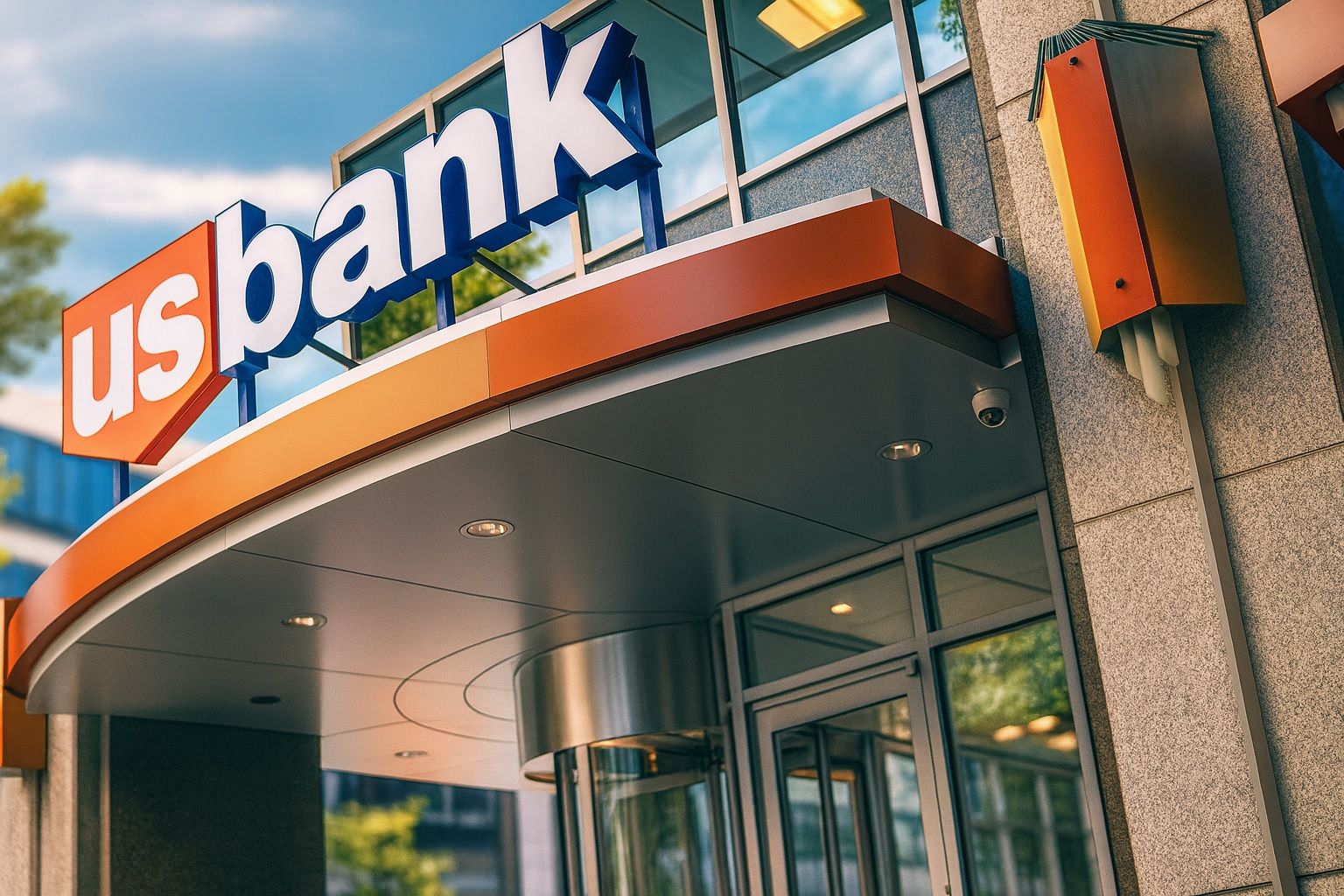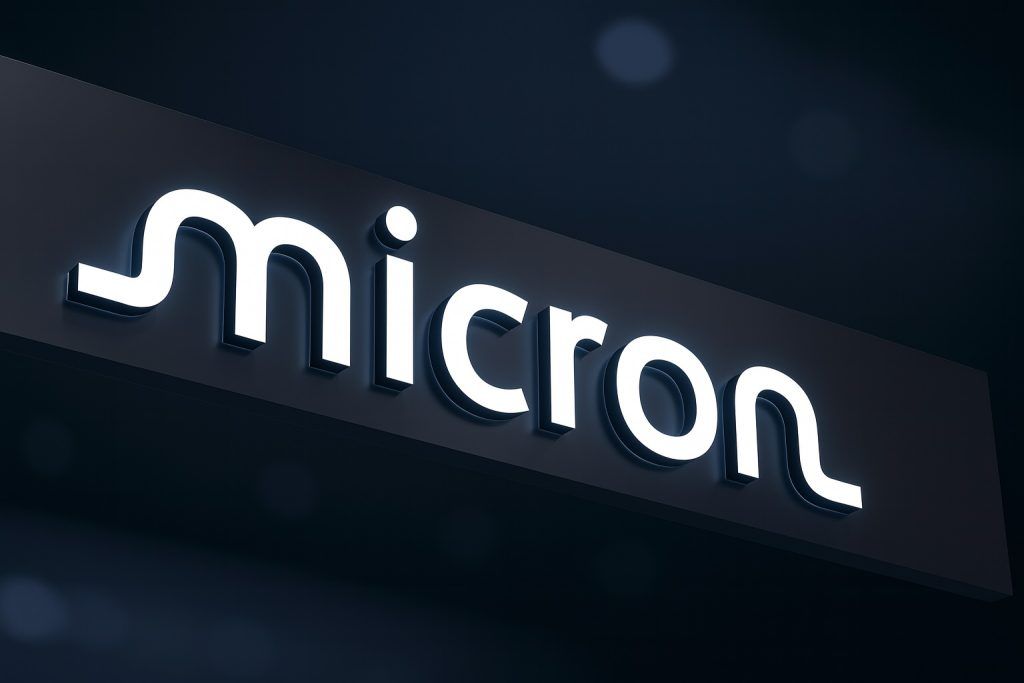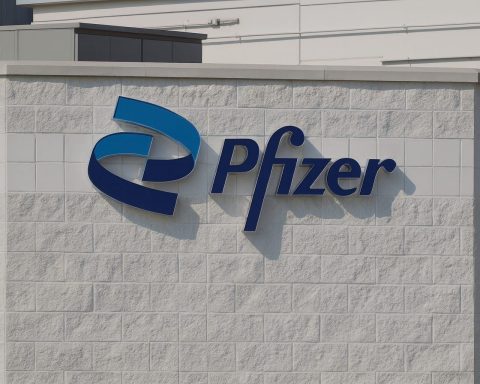- Earnings smash estimates: U.S. Bancorp (NYSE: USB) reported third-quarter 2025 adjusted earnings of $1.22 per share, beating consensus (~$1.13) handily, with revenue of $7.30 billion topping forecasts (~$7.16 billion) [1]. Net income jumped ~16.7% year-over-year to $2.0 billion [2], driven by record-high quarterly revenue and solid loan & fee growth.
- Shares jump on results: USB’s stock rallied ~3–4% in early trading Oct. 16 after the earnings beat, reversing a recent downtrend [3]. The stock had fallen about 6% over the past month amid broader market volatility [4], but the strong results and upbeat guidance spurred a rebound.
- Dividend boosted: The bank hiked its quarterly dividend to $0.52 per share (up from $0.50), a 4% increase, payable Oct. 15 [5] [6]. At this new rate (annualized $2.08), USB yields roughly 4.5%, underscoring management’s confidence in capital strength and rewarding shareholders even as the industry faces higher capital requirements.
- New digital assets unit: U.S. Bancorp this week unveiled a dedicated Digital Assets & Money Movement division to accelerate development of crypto custody, stablecoin issuance, asset tokenization and faster payment solutions [7] [8]. Veteran executive Jamie Walker will lead the unit, aimed at tapping growing client interest in “safely [moving] money, stor[ing] deposits and using tokenized assets” with new technologies [9].
- Analysts upbeat: Wall Street remains mostly bullish on USB. The stock carries a consensus “Buy” rating, and the average 12-month price target in the low-$50s implies ~13% upside from current levels [10] [11]. Notably, Citigroup recently raised its target price to $65 (from $59) with a Buy rating [12], citing U.S. Bancorp’s improving earnings trajectory and strong deposit franchise.
- Sector tailwinds: USB’s strong quarter comes amid a broader banking rally. Major peers like Bank of America and Morgan Stanley also beat Q3 expectations this week, sending their stocks up ~4–5% [13] and signaling robust consumer spending and deal-making activity. A surprise Fed rate cut in September – with more easing expected – has bolstered market sentiment and lifted financial stocks off their autumn lows [14].
USB Stock Price & Recent Trends
U.S. Bancorp’s stock (USB) is trading around $47 per share following the earnings news, up from roughly $46 before the report. The upbeat Q3 results sparked a ~3% jump in pre-market and early session trading [15], as investors reacted to the better-than-expected profit numbers. This marks a sharp reversal of the stock’s recent trajectory – over the past month USB had slid about 6% amid market-wide volatility and rising interest rates [16].
Despite today’s pop, U.S. Bancorp shares remain roughly flat year-to-date, underperforming some rival banks. For instance, Wells Fargo’s stock has surged ~27% in 2025 [17], far outpacing USB. U.S. Bancorp is still about 12% below its 52-week high (~$54) and well above its spring lows near $35. The stock’s modest 2025 performance reflects earlier concerns around the banking sector – including higher deposit costs and economic uncertainty – which had weighed on regional bank valuations. However, with the latest results alleviating some fears, USB may be poised to play “catch-up” if momentum in the banking industry continues.
Investors will be watching if the post-earnings rally has legs. Prior to earnings, USB’s relative underperformance suggested skepticism, but the new data may shift sentiment. “Banks are a window into the U.S. economy,” notes S&P analyst Nathan Stovall [18] – and U.S. Bancorp’s improving metrics could indicate that economic conditions (at least for households and businesses served by USB) remain healthier than expected. If the broader market stays favorable – aided by declining interest rate pressures and upbeat bank earnings across the board – USB’s stock could see further upside. Analysts point out the stock is still trading at a modest ~10× forward earnings, leaving room for multiple expansion if confidence returns.
Q3 2025 Earnings Blowout: Beats on Revenue and Profit
U.S. Bancorp delivered a standout third quarter, with results comfortably exceeding Wall Street forecasts. Adjusted earnings per share came in at $1.22, about 9–10% above consensus (around $1.11–1.14) [19] [20]. This represented robust 18% EPS growth from the $1.03 a year ago [21], as higher revenues and well-controlled expenses fueled the bottom line.
Total revenue hit a record$7.3 billion for Q3, up ~6–7% year-over-year [22]. Notably, net interest income (NII) increased about 2% YoY to $4.22 billion [23], as loan growth and a stable net interest margin (2.75% vs 2.74% a year prior) offset higher funding costs. More impressively, non-interest income (fees from payments, cards, investment services, etc.) jumped 14% to $3.08 billion [24], reflecting strength in USB’s diversified business lines. This combination – steady interest spread and surging fee income – propelled total revenues above analyst expectations [25].
On the expense side, U.S. Bancorp showed improved efficiency. Non-interest expenses were roughly flat year-over-year, leading to an efficiency ratio of 57.2%, an improvement that generated 530 basis points of positive operating leverage [26]. In plain English, the bank managed to grow revenue significantly faster than expenses, boosting profitability. The bank’s operating return on tangible common equity hit 18.6% for the quarter, with return on assets at 1.17%, both healthy increases indicating better utilization of capital and assets [27].
Thanks to higher revenues and controlled costs, net income surged to $2.001 billion in Q3, a 16.7% jump from the prior year [28]. CEO Gunjan Kedia (who recently took the helm) lauded the results, saying “solid net interest income growth and margin expansion, as well as continued momentum across our fee businesses and prudent expense management supported double-digit net income growth” [29]. In other words, U.S. Bancorp is seeing balanced growth across both interest and fee income streams while keeping costs in check – a recipe for expanding profits.
Wall Street had been cautiously optimistic heading into these earnings, but USB’s “beat-and-raise” performance clearly exceeded the Street’s tempered expectations. The magnitude of the earnings beat (over $0.10 per share) and the record revenue suggest U.S. Bancorp’s core franchise – spanning consumer banking, payments, wealth management and corporate lending – is firing on all cylinders despite headwinds like high interest rates. This quarterly beat marks the third consecutive quarter that USB has surpassed profit estimates [30], reinforcing confidence that management can navigate a challenging environment.
Asset Quality and Balance Sheet: Resilient Amid Higher Rates
Crucially, U.S. Bancorp achieved its earnings growth without sacrificing credit quality. In Q3, the bank’s provision for credit losses was $571 million [31], basically flat (+2.5%) compared to a year ago, and generally in line with loan growth. There were no alarming spikes in bad loans. In fact, nonperforming assets declined slightly to $1.654 billion as of Sept. 30, down from $1.680 billion in June [32] – indicating that the portion of loans going sour is shrinking, not rising, quarter-over-quarter. This is a positive surprise given higher interest rates (which can stress borrowers). It appears that, so far, U.S. Bancorp’s borrowers are weathering the higher rate environment, and the bank’s underwriting standards remain solid.
USB’s loan portfolio grew modestly (~1.4% YoY) and deposits were roughly flat to slightly up (~0.6% YoY) [33]. Deposit stability is an important point – earlier this year, regional banks saw customers pull deposits in search of higher yields or due to confidence jitters, but U.S. Bancorp managed to hold onto and even grow its $511 billion deposit base [34]. The bank’s Common Equity Tier-1 (CET1) capital ratio stands at 10.9% [35], comfortably above regulatory minimums, reflecting a strong capital buffer. In short, USB’s balance sheet appears robust, with ample capital and liquidity to withstand economic shocks.
The company’s credit metrics underscore a conservative risk profile. Nonperforming loans are just 0.25% of total assets (approximately), and net charge-offs (actual loan losses) remain low (USB did not cite any unusual spike). Management’s commentary suggests they are not seeing worrying signs in consumer or commercial credit – a key reassurance for investors given concerns about how higher rates and a potential economic slowdown might impact banks. As one portfolio manager noted broadly of bank earnings this week, “People are spending, and the consumer seems to be fine… Both inflation and employment are within ranges that are basically reasonable” [36]. That sentiment appears to hold true in USB’s results: consumers and businesses continue to meet their obligations, and the bank isn’t flashing red flags on credit.
Dividend Hike and Shareholder Returns
In a show of confidence, U.S. Bancorp’s Board of Directors raised the quarterly dividend to $0.52 per share (from $0.50) this quarter [37]. The new dividend was paid on Oct. 15 to shareholders of record Sept. 30, and represents the second increase in the past year (USB also hiked from $0.48 to $0.50 earlier in 2025, a roughly 4% raise each time). At the current payout, the dividend yield on USB is approximately 4.5% [38], well above the S&P 500 average yield and quite attractive for income-focused investors. The dividend payout ratio stands around ~50% of earnings [39], which is a comfortable level leaving room for future increases while retaining capital for growth.
Management’s willingness to keep boosting the dividend despite a tumultuous period for banks (remember that many regionals were under severe pressure in 2023’s banking scare) sends a strong signal. It suggests U.S. Bancorp is confident in its earnings stability and capital position. In fact, the firm’s payout remained steady through the recent industry turmoil, and now is growing again – a stark contrast to some smaller banks that had to cut or suspend dividends during stress periods. USB also maintains dividends on its preferred stocks, such as the Series B non-cumulative preferred. That preferred issue (ticker USB.PRH) recently traded around $18.88, which is a 23.7% discount to its $25 liquidation value, and yields over 7% at current prices [40]. The high yield on USB’s preferred reflects the overall rise in interest rates – many bank preferreds now yield 6–7%+. USB.PRH’s price dipped slightly this week (down 0.8% on Tuesday) even as the common stock jumped ~2.2% that day [41], illustrating how equity investors are growing more optimistic while fixed-income investors still demand higher yields. Nonetheless, U.S. Bancorp’s ability to comfortably cover its preferred dividends and increase common dividends highlights its financial resilience.
Besides dividends, the company has also resumed share repurchases in 2025 after a pause last year (though at a modest pace, per prior disclosures). Given the stock’s undervaluation relative to historical multiples, buybacks could be an accretive use of capital if regulators permit more flexibility ahead. For now, the dividend hike is the clearest sign of returning capital to shareholders. “U.S. Bancorp rewards shareholders with dividend growth, reflecting a strong capital position and confidence in future earnings,” noted one Yahoo Finance report when the increase was announced [42]. Income investors appear to be taking notice of USB’s generous yield and steady dividend trajectory.
Guidance and Outlook: Cautious Optimism into 2026
U.S. Bancorp’s management struck a cautiously optimistic tone for the coming quarters. While not issuing formal EPS guidance, the bank provided some Q4 2025 outlook metrics: net interest income is expected to remain roughly stable compared to Q3, and total fee revenue around $3 billion in Q4 [43]. They did caution that non-interest expenses will likely tick up 1% to 5% versus Q3 [44] (partly due to year-end investments and inflationary pressures). Taken together, this implies Q4 earnings could be flat to slightly down sequentially – a conservative stance – but still solid on a year-over-year basis. Analysts currently forecast Q4 EPS around $1.14 on $7.2–7.3 billion revenue [45], which would represent continued growth from last year’s Q4.
For the full year and into 2026, analysts see earnings climbing further. The consensus 2025 EPS estimate is about $4.40 and for 2026 around $4.70 (rough estimates, indicating high-single-digit growth) according to Seeking Alpha data. Key drivers will be moderating interest expenses (if the Fed cuts rates as expected, funding costs should ease) and ongoing strength in fee businesses like payments. However, lower rates could also compress asset yields, so NII growth might be subdued until loan volumes pick up more strongly. Management’s strategy to deepen customer relationships – for example, via its new “Smartly” bundled accounts platform – aims to grow deposits and cross-sell services without overly raising funding costs [46]. If successful, that could support margin stability even in a lower-rate climate.
Looking ahead, U.S. Bancorp is also investing in technology and digital finance initiatives – exemplified by the creation of its Digital Assets unit. By venturing into areas like stablecoins, cryptocurrency custody, and tokenized assets, USB is positioning itself for emerging revenue streams beyond traditional banking [47]. “Clients increasingly want to understand how digital assets can help them” in finance [48], said Dominic Venturo, the bank’s Chief Digital Officer. With crypto markets rebounding and regulatory attitudes softening (President Donald Trump has voiced support for digital asset innovation, encouraging banks to participate in the crypto space [49]), this could become a notable growth avenue in coming years. While still early, U.S. Bancorp’s proactive move into fintech could differentiate it from peers if it bears fruit.
On the macro front, several factors will influence USB’s fortunes: interest rate trends, the economic cycle, and regulatory changes. The Federal Reserve’s next moves are top of mind – a couple of rate cuts are anticipated over the next 6 months, which would lower borrowing costs for consumers and businesses (potentially boosting loan demand and reducing default risk) but also compress banks’ lending margins. U.S. Bancorp’s relatively asset-sensitive balance sheet (one that benefited from rising rates) may see some margin pressure if rates drop. However, a gentler rate environment could spur more mortgage and commercial loan activity, and ease the competitive pressure on deposit rates. USB’s CFO has noted in past calls that the bank expects loan growth to reaccelerate if the economy avoids recession and that it has levers to manage deposit costs even as rates fluctuate.
Economic conditions appear reasonably favorable for now – unemployment remains low and consumer spending is holding up, which bodes well for credit quality and loan demand [50]. That said, investors will monitor any signs of stress (e.g. rising delinquencies in credit cards or commercial real estate, which hasn’t been a big issue for USB yet). Another area to watch is regulation: U.S. Bancorp, as a large regional bank (~$686 billion in assets) [51], is subject to evolving capital rules. Regulators have proposed higher capital buffers for banks of USB’s size in the wake of 2023’s regional bank failures. USB has pushed back against overly stringent rules, arguing its risk profile is manageable, but if new rules force it to hold more capital, that could cap shareholder payouts or loan growth somewhat. So far, though, USB’s 10.9% CET1 ratio comfortably meets current requirements, and the earnings momentum gives it flexibility to build capital through retained profits.
Overall, the outlook for U.S. Bancorp appears positive yet prudent. The bank’s own performance – rising profits, stable credit, growing dividends – is strong. Analysts’ consensus is that USB stock has more room to run: the average price target is around $52–$53, about 13% above the latest price [52]. Many analysts highlight USB’s mix of businesses (which skew more toward stable fee income and less volatile trading than Wall Street banks) as an advantage in a late-cycle economy. Of twenty-three analysts tracked by MarketBeat, roughly 14 rate USB a Buy and 8 a Hold (with only 1 Sell), giving a “Moderate Buy” consensus and even a couple of recent upgrades [53] [54].
There are, of course, risks ahead. If the economy were to enter a recession, all banks would face pressure from higher loan defaults and weaker loan demand. Banks’ net interest margins could also be squeezed if the Fed cuts rates very quickly or if competition for deposits remains fierce. Additionally, any unexpected fallout in the financial system – for example, a geopolitical shock or another bout of bond market turmoil – could test depositor confidence anew (as seen in early 2023). However, U.S. Bancorp has proven its mettle through those past challenges, emerging with its franchise intact and growing. It’s the country’s fifth-largest bank by assets [55], and it leveraged that scale to navigate turbulent times better than many smaller peers.
Going into year-end 2025 and beyond, investors in USB will be looking for continued steady execution: hitting earnings targets, maintaining credit discipline, and finding new growth in areas like payments technology and digital assets. The bank’s Q3 results show it is on the right track. As the Fed potentially eases policy and the economy decelerates mildly, U.S. Bancorp’s conservative approach (strong reserves, diversified income, controlled costs) could prove especially valuable. If management can deliver another solid quarter to close out 2025 and guide confidently for 2026, U.S. Bancorp’s stock may well close its valuation gap relative to peers. For now, after this earnings “beat,” the mood around USB has clearly shifted more optimistic – a welcome change for shareholders who have been waiting for the Twin Cities banking giant to shine again.
Sources: U.S. Bancorp Q3 2025 earnings release and conference call details; Yahoo Finance/Business Wire news on earnings and dividends; ts2.tech market analysis on bank earnings and preferred stocks [56] [57]; Reuters and Benzinga coverage of USB’s results, executive quotes, and new digital asset initiative [58] [59]; MarketBeat and StockAnalysis data on analyst ratings and price targets [60] [61]; Reuters market report on peer bank earnings (Bank of America, Morgan Stanley) and macro commentary [62] [63]; U.S. Bancorp investor relations.
References
1. www.benzinga.com, 2. www.benzinga.com, 3. www.chartmill.com, 4. www.chartmill.com, 5. www.marketbeat.com, 6. www.marketbeat.com, 7. www.reuters.com, 8. www.reuters.com, 9. www.reuters.com, 10. stockanalysis.com, 11. www.marketbeat.com, 12. www.marketbeat.com, 13. www.reuters.com, 14. ts2.tech, 15. www.chartmill.com, 16. www.chartmill.com, 17. ts2.tech, 18. ts2.tech, 19. www.benzinga.com, 20. www.chartmill.com, 21. www.marketbeat.com, 22. news.alphastreet.com, 23. www.benzinga.com, 24. www.benzinga.com, 25. www.benzinga.com, 26. www.benzinga.com, 27. www.benzinga.com, 28. www.benzinga.com, 29. www.benzinga.com, 30. www.marketbeat.com, 31. www.benzinga.com, 32. www.benzinga.com, 33. www.benzinga.com, 34. www.benzinga.com, 35. www.benzinga.com, 36. www.reuters.com, 37. www.marketbeat.com, 38. www.marketbeat.com, 39. www.marketbeat.com, 40. ts2.tech, 41. ts2.tech, 42. finance.yahoo.com, 43. www.benzinga.com, 44. www.benzinga.com, 45. www.chartmill.com, 46. www.benzinga.com, 47. www.reuters.com, 48. www.reuters.com, 49. www.reuters.com, 50. www.reuters.com, 51. www.chartmill.com, 52. stockanalysis.com, 53. www.marketbeat.com, 54. www.marketbeat.com, 55. www.chartmill.com, 56. ts2.tech, 57. ts2.tech, 58. www.benzinga.com, 59. www.reuters.com, 60. stockanalysis.com, 61. www.marketbeat.com, 62. www.reuters.com, 63. www.reuters.com










